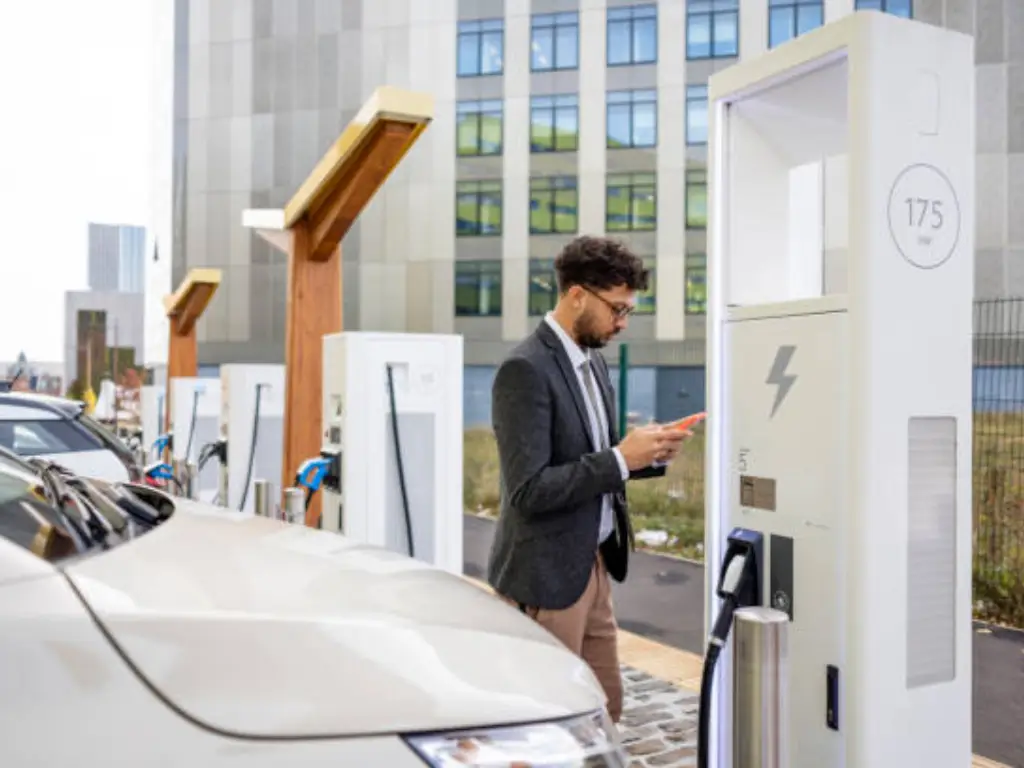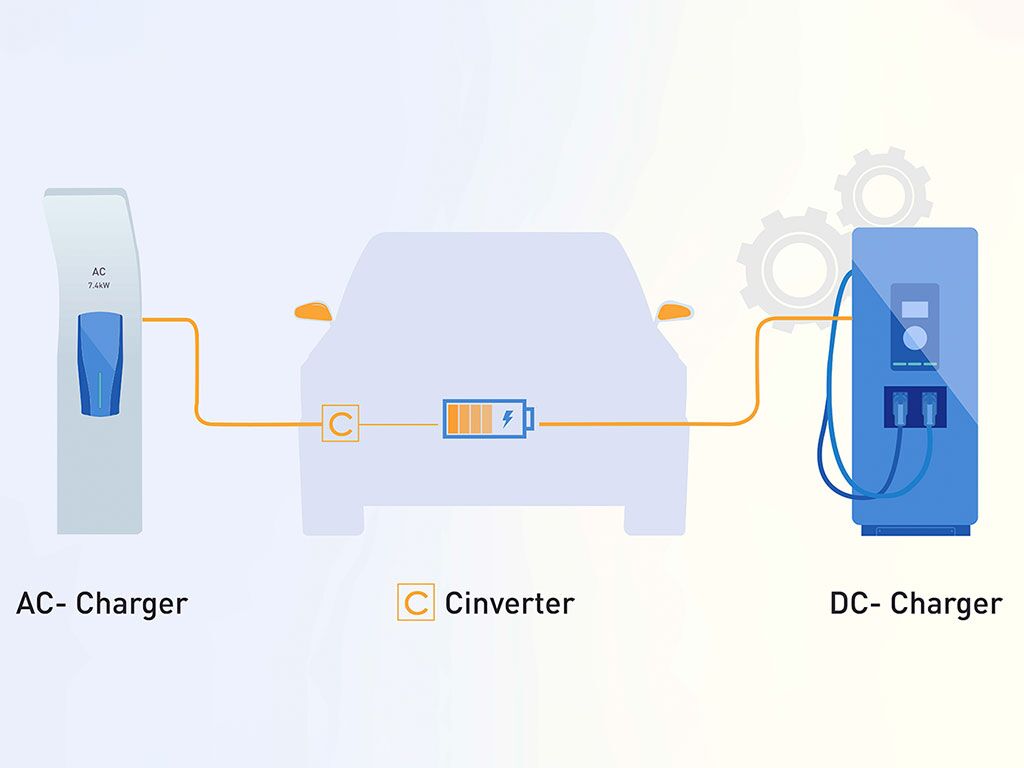Introduction
The shift towards electric vehicles is not a prediction anymore; it is the business reality of the current time. However, with millions of EVs on our roads, the fixed charging infrastructure is one step behind, leaving drivers with areas of uncertainty. This mismatch between the adoption of vehicles and the maturity of infrastructure is an obvious and strong opportunity for a new breed of entrepreneur. Mobile EV charging is not just a convenience; it is an essential service that offers the last, missing piece in the puzzle of sustainable transportation and EV adoption, and that is confidence when an outlet is not nearby. This guide will give the ultimate blueprint for developing such a business.

Is Mobile EV Charging a Good Investment?
Whether mobile EV charging is a good investment or not is to ask whether transportation itself has a future. The response is a resounding yes. Look at the landscape of the EV market: the big car companies are already in the process of shutting down internal combustion engine production, and have ambitious deadlines to switch to all-electric lineups. Consumer demand and government regulations have established an irresistible force toward electrification.
This sudden change has, however, posed major logistical challenges, driven by this growing demand, that can only be addressed by a mobile charging business:
- Range Anxiety: The fear of running out of miles of range and being stranded is the main psychological obstacle of many potential EV owners. A professional mobile charging service is a roadside assurance provider, and it turns this fear into confidence.
- Charging Deserts: Although there has been improvement, large swathes of the suburban and rural environment have insufficient public charging points. Your service can be used in these deserts, where fixed infrastructure is not economically feasible.
- Fleet Electrification: Commercial fleets, including last-mile delivery vans and corporate car services, are electrifying faster to achieve ESG objectives and lower operating expenses. Such fleets need dependable, frequently overnight, charging options that might not be present at their depots. On-site power can be scheduled and delivered by a mobile charging service, so that an entire fleet is ready to work.
- Apartment / Condo Residents: A large percentage of the population resides in multi-family units, where it is not always possible to install a personal charger. Mobile charging provides these residents with a convenient solution to the problem of using only public stations.
The need is not hypothetical; it exists and increases every day. It is not a question of whether there is a market, but how to develop a strong and profitable business to serve it. The winners in this emerging industry will be those who enter it with careful planning and operational excellence.
Step 1: Laying the Foundation with a Solid Business Plan
A successful business is never by chance. It is the outcome of a carefully designed strategy that foresees problems and outlines the way to success. Your business plan should be the architectural blueprint of your whole operation before a single volt is delivered.
Choosing Your Path to Profit
Your business model will determine how you operate and how you deal with customers on a daily basis. Finding a suitable business model is key, and a number of tested routes exist, and each with its own benefits:
- On-Demand Emergency Service: This model, often partnering with roadside assistance companies, is the classic roadside assistance. When they are stranded, customers make a request for emergency use and immediate charging through an app or a phone call. It has high prices because of the urgency of the need, but it needs a highly efficient dispatch system and strategic positioning of your service vehicles.
- Subscription Model: This model is aimed at apartment complex residents or tenants of office parks and offers a fixed number of charging sessions per month at a fixed price. It provides consistent, repeatable income and creates a customer base, but the price has to be well-balanced to make it profitable.
- B2B Fleet Services: This is probably the most profitable and reliable model. You enter into agreements with business customers to offer them scheduled charging of their EV fleets, frequently at off-peak, overnight times. It offers predictable work of high volume and long-term business relationships.
- Event-Based Charging: Concerts, festivals, trade shows, and sporting events are now attracting large EV traffic. Event planners need temporary power. You can also enter into a contract to offer on-site mobile charging during the event, either charging a flat fee to the organizer or the attendees per use.
- Equipment Leasing Model: In this B2B model, you rent out your mobile charging equipment to other companies. This creates a steady, contractual income without the operational complexity of operating a service fleet.
Key Elements of Your Mobile Charging Business Plan
Your formal business plan must be a detailed document that outlines all aspects of the business. It is a precondition to getting funding and an essential roadmap to your own strategic choices. The most important parts should contain:
- Executive Summary: A brief description of your business, mission and the opportunity.
- Market Analysis: In-depth market research of your target service area. Analyze the EV charging market, determine the number of registered EVs, determine your major competitors (including fixed charging stations), determine pricing, and determine your target customer (e.g., stranded motorists, fleet managers, event organizers).
- Services Provided: A clear explanation of your business model(s) and pricing.
- Marketing and Sales Strategy: A realistic approach to how you will market and get customers.
- Operational Plan: Information about your vehicles, equipment, software, personnel, and daily workflow.
- Management Team: Profiles of the main people involved and their experience.
- Financial Projections: A comprehensive projection that covers start-up costs, operational costs, revenue projections and cash flow analysis within the first three to five years.
Navigating Licenses, Permits, and Essential Insurance
It is unacceptable to operate without the right legal and insurance framework. These prerequisites must be discussed:
- Business Registration: Register your business as an LLC, S-Corp, or other suitable entity to ensure your personal assets are not at risk.
- Permits and Licenses: Investigate state and local requirements. This can be a general business license, permits to operate a commercial vehicle, and rules regarding the resale of electricity.
- Insurance: This is not negotiable. You will require a full insurance package, which will include:
- General Liability: Covers you in case of damage to property or injury to a third party in the course of your operations.
- Commercial Auto: Insures your service vehicles and drivers.
- Professional Liability (Errors & Omissions): Covers against claims of negligence in the service you offer.
- Property Insurance: Insures your valuable charging equipment against theft or damage.
Insurance is one of the most important things that you should not underestimate; it is the safety net that will save your business in case of unpredictable events.
Step 2: Securing Funding and Projecting Your Finances
The engine of your business start-up is capital. Knowing your financial requirements and profitability potential is a must to attract investors and to run your business efficiently. Beyond private investors or loans, actively seek out federal or state government grants aimed at promoting EV infrastructure.
Accurately Calculate Your Startup Costs
One of the traps is to underestimate the starting capital or upfront costs. Your estimates should be comprehensive and based on real life quotations. The most important spending is:
- Vehicle: A good van or light-duty truck ($30,000 – $70,000).
- Mobile Charging Hardware: A professional grade DC fast charging system is a major investment ($20,000 – $60,000+).
- Software Stack: The cost of developing or subscribing to your dispatch, booking, and payment platform ($5,000 – $25,000).
- Legal and Registration Fees: Fees incurred in establishing your business entity ($1,000 – $3,000).
- Insurance Down Payments: First premiums to start your policies ($2,000 – $5,000).
- Start-up Marketing Budget: Money to spend on your site, online advertising, and opening promotion ($3,000 – $10,000).
- Working Capital: A cash buffer to pay operational costs (fuel/electricity, salaries, software fees) during the initial 3-6 months until the business is cash-flow positive.
Projecting Your Revenue and Ensuring Long-Term Profitability
Your revenue model should be profit oriented. This entails pricing at a level that indicates the premium quality of your service but at a competitive level. The typical pricing strategies are:
- Per Kilowatt-hour (kWh): A clear model, like fixed stations, and a service dispatch fee.
- Flat Fee: A fixed amount of money to charge for a certain amount of time (e.g., 30 minutes of charging) or a guaranteed increase in range.
- Subscription Fee: A monthly or annual fee that is charged to cover a fixed number of service calls or charging sessions.
To estimate revenue, estimate a reasonable number of service calls that you can do per day per vehicle. This depends on your charging rate, travel time and market demand. Simulate various scenarios, such as conservative, moderate, and optimistic, to know your possible ROI and break-even point.

Step 3: Choosing the Heart of Your Business: Mobile EV Charging Hardware
The technical core of your operation is the mobile charging unit itself. Your service quality and profitability will be directly determined by its performance, reliability, and efficiency. This is not a place to compromise; choosing professional-grade equipment is an investment in the success of your business.
Understanding Key Specifications: Charging Levels, Battery Capacity and Portable
You must be fluent in the technical language of EV charging to make an informed decision.
- Charging Levels:
| Charging Level | Type | Power Range | Typical Charging Time | Suitability |
| Level 1 | AC Slow | ~1–2 kW | 8–20 hours | Household outlet; far too slow for commercial use |
| Level 2 | AC Moderate | ~7–22 kW | 4–8 hours | Public parking lots or home charging; not viable for mobile business |
| DC Fast Charging (Level 3) | DC Fast | 50–350 kW+ | 20–30 minutes | Commercial standard; the only viable choice for mobile EV charging services |
- Battery Capacity (kWh): This is the ”gas tank” of your mobile charger. It defines the amount of energy that you can store and, thus, the number of vehicles that you can service before your unit has to be recharged. The bigger the capacity, the more service calls can be made per shift, and the more revenue can be made.
- Portability: This is the physical size of the charger. Is it a big system that is permanently installed in a van or is it a smaller modular system that can be transported by hand? This is completely up to your business model, a permanently mounted system can provide more power, whereas portable units are more flexible.
Selecting a Reliable Partner for Your EV Chargers Needs
The marketplace is populated with equipment of varying quality. For a commercial operation, your purchasing criteria must extend beyond the initial price tag. Your choice of hardware partner is a critical long-term decision that directly impacts your venture’s viability. An established manufacturer like BENY, with over 30 years of industry experience, exemplifies the key attributes of a strategic partner who can de-risk your investment and ensure operational excellence:
- A Comprehensive Product Line: BENY’s versatile portfolio, from flexible portable chargers to powerful 600kW DC fast chargers, provides tailored EV charging solutions for any business model you choose, be it roadside assistance or commercial fleet services.
- Certified Safety & Reliability: All equipment is engineered for continuous commercial use and certified to international standards (UL, CE, TUV), which is non-negotiable for mitigating business risk and ensuring operational uptime.
- Intelligent Management Platform: The proprietary EVsaas software platform provides complete operational control, allowing for real-time monitoring, remote management, and efficient billing of your entire hardware fleet from a single dashboard.
- Startup-Oriented Business Support: Business-friendly services like low minimum orders (MOQ), brand customization options, and a robust 3-year warranty are specifically designed to protect your initial investment and support your growth.
Explore BENY’s full range of commercial charging solutions to power your new venture.
Step 4: Building Your Operational Workflow and Software Stack
The driver of profitability in a service business is efficiency. The difference between a professional service and an amateur one is a seamless operational workflow, which is enabled by a powerful software stack and excellent customer service. Your technology should be able to handle the whole customer process, starting with the first request to the last payment.
This system must have a customer facing app or web portal to make booking easy, a dispatching dashboard to allow your team to manage service calls and optimize routes, secure payment processing, and a customer relationship management (CRM) tool to track client history, provide ongoing customer support, and build loyalty. Regardless of whether you develop a bespoke solution or subscribe to an existing platform, the technology should be robust, scalable and easy to use by your customers and your staff.
Step 5: Marketing Your Service and Winning Your First Customers
It does not matter how good your equipment is and how good your plan is when customers cannot find you. Your marketing plan should be aggressive and specific.
- Digital Foundation: Your digital storefront is a professional website with clear descriptions of your services, pricing, and contact information. Make sure that it is local search optimized so that when someone searches for the “nearest charging station,” they see you.
- Targeted Advertising: Utilize online advertisements on websites such as Google and social media to reach EV owners within your geographic service area.
- B2B Outreach: In the case of fleet services, direct outreach is essential. Find local businesses that have an expanding EV fleet, such as delivery services, municipalities, and rental car agencies, and make a formal proposal outlining your value proposition.
- Partnerships: Develop relationships with companies that engage with EV drivers. Auto dealerships, tire stores, and roadside assistance clubs can be good referral partners.
- Physical Presence: For event-based models, the physical presence of a professional setup and clear branding on-site is your main marketing tool.
Step 6: Overcoming Common Challenges and Scaling Your Operation

Long-term success is not only about launching, but also about smartly overcoming challenges, streamlining operations, and growing your business. To succeed in this fast-paced industry, operators must be aggressive in cost management, logistical problem-solving, and data-driven decision-making to create a sustainable, future-proof business.
Building Your Sustainable Energy Supply Solution
One of the most important operating expenses that directly affects your margins is the electricity to recharge your own units. The real strategic operators establish a sustainable energy supply at their home base. This, at least, implies planning the recharging of the fleet at off-peak times when utility rates are the lowest. A more progressive strategy is to invest in solar panels at your depot, which will save on energy costs in the long-term and give you a potent green credential. This can be combined with fixed energy storage to store cheap off-peak or solar power to use at any time, which can be very cost effective and operationally flexible. This strategy is perfected by all-in-one systems like BENY’s battery-integrated EV chargers, which combine solar, storage, and fast charging. They not only slash your daily energy costs but also empower you to deploy high-power services in grid-limited locations, saving a fortune in potential infrastructure upgrades.
Common Logistical Hurdles and How to Solve Them
Vehicle routing is of utmost importance to reduce travel time and costs. The main daily issues are how to handle the peak demand without overstaffing, how to plan the downtime of the vehicles to perform maintenance, and how to have contingency plans in case of disruptions such as extreme weather or traffic. Use the information provided by your fleet management software to find bottlenecks and constantly optimize these logistical processes to be as efficient as possible.
Planning Your Fleet Expansion for Maximum ROI
The decision to scale your fleet must be based on data, not a gut feeling. Fleet utilization is the most important measure; grow when your current vehicles are always full and you are rejecting service calls. Use your service data to determine geographic hotspots that produce the most profitable calls. Send new vehicles to these high-demand regions or move into neighboring regions. A new vehicle is a major investment and the most effective way to guarantee a good payoff is to plan its deployment on the basis of reliable revenue data.
Conclusion
Detailed planning, strategic investment, and operational excellence are the key to the road to a successful mobile EV charging business. The potential in the EV charging industryis enormous and is fueled by an unstoppable technological and cultural transformation. The idea is simple, but the implementation is complicated. Through the creation of a detailed business plan, the acquisition of sufficient funding, the purchase of professional-level hardware, and the creation of an advanced marketing and operational strategy, you can create more than a service. You will be able to create a cornerstone of the new automotive ecosystem, providing power and confidence in the electric era.











